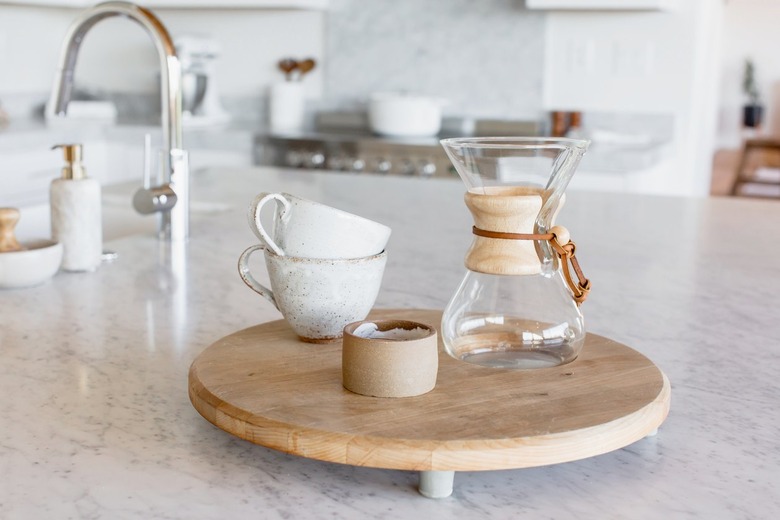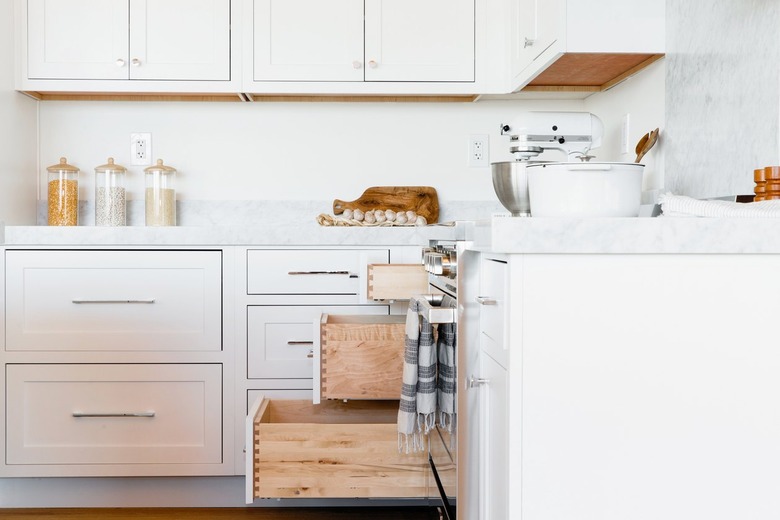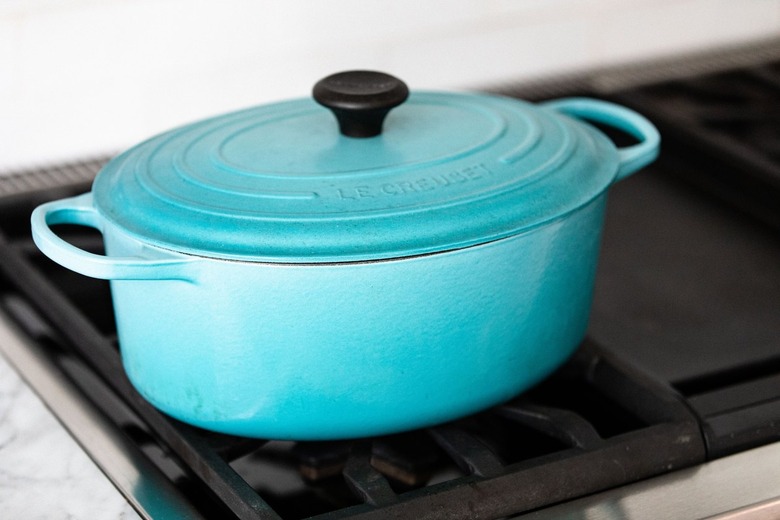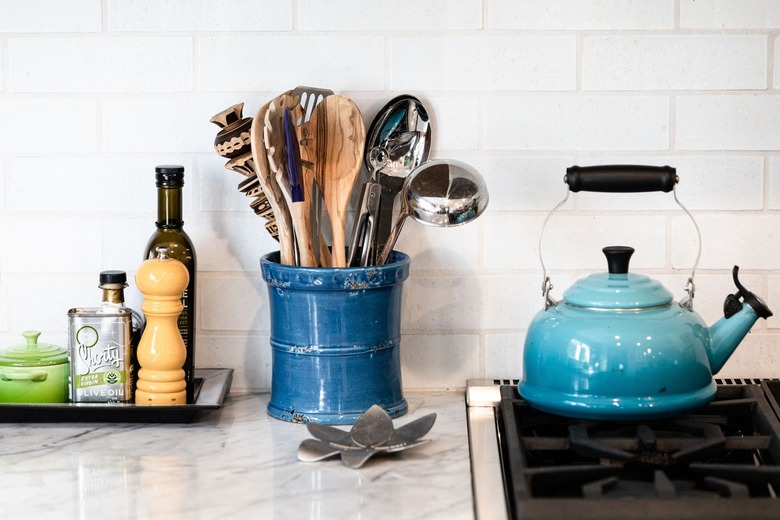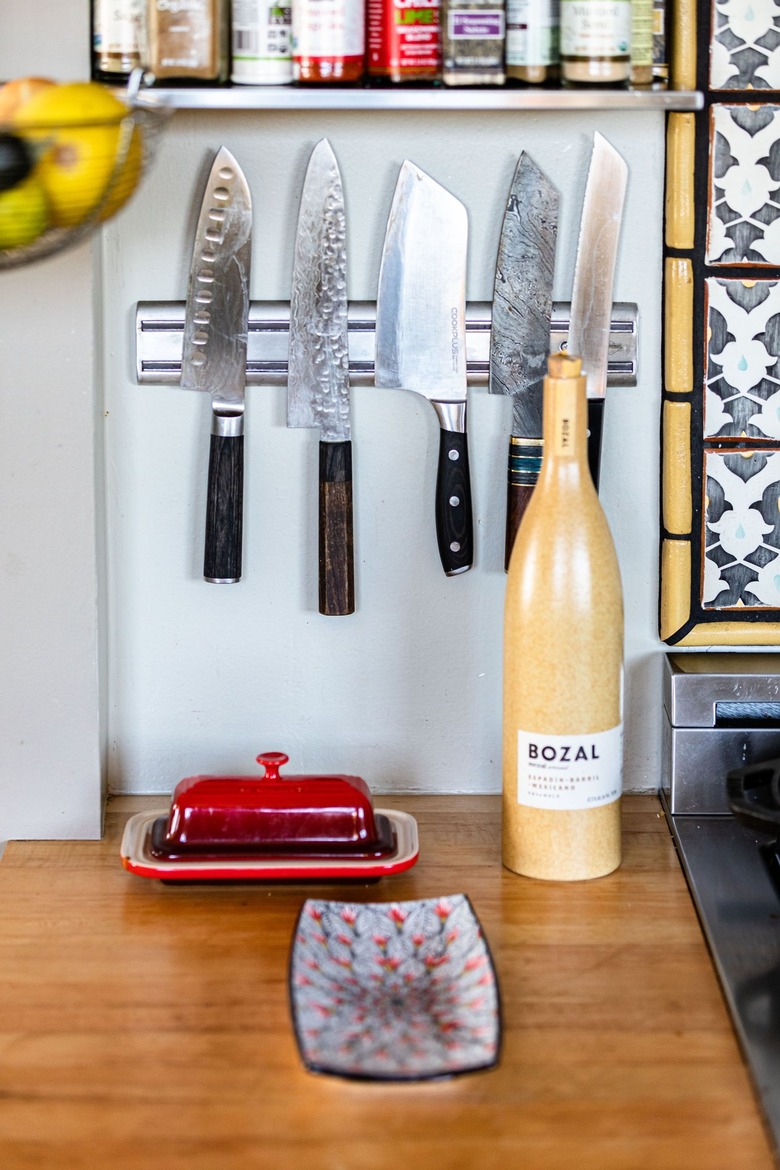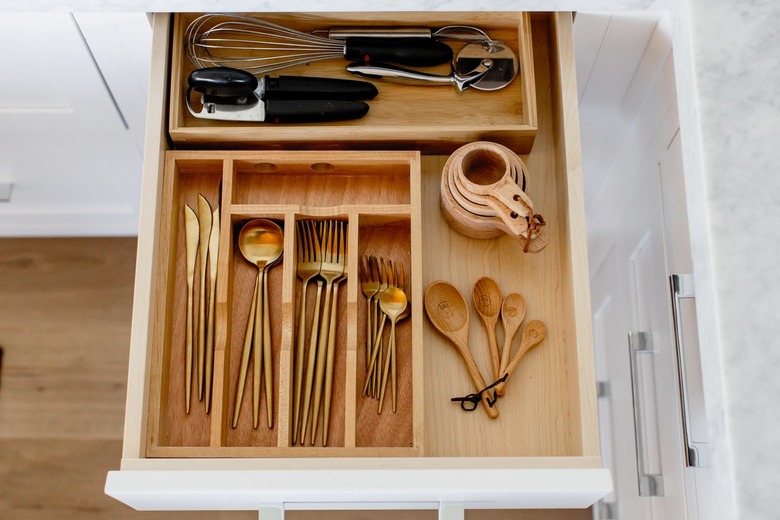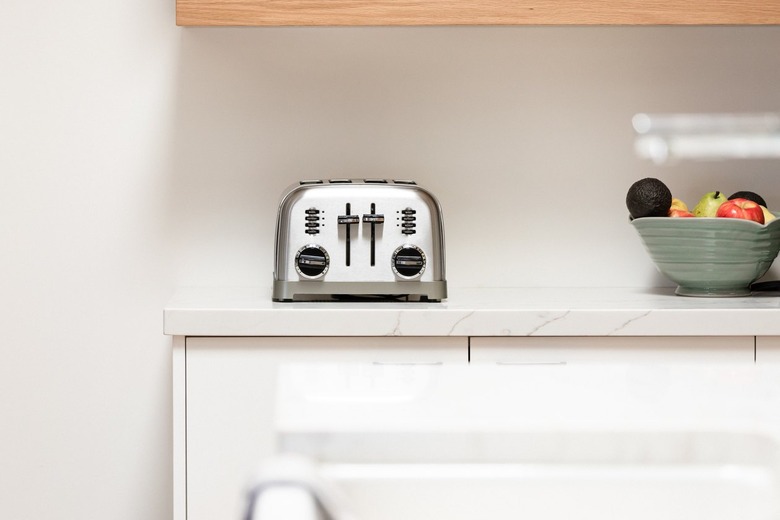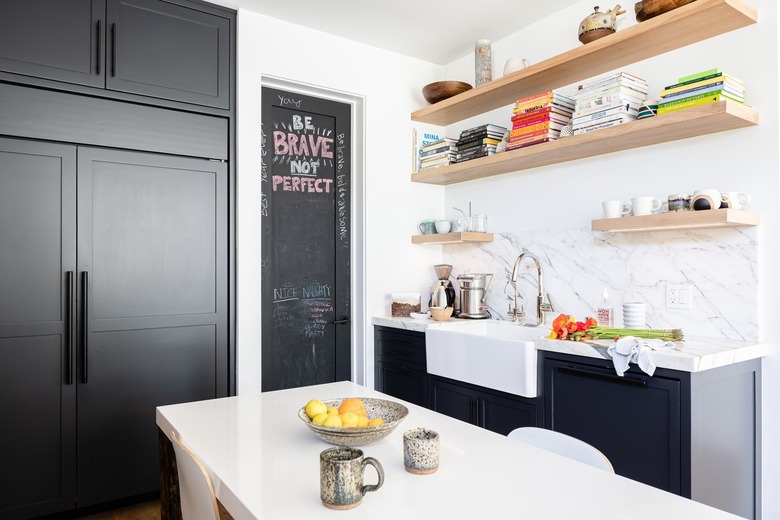How To Organize A Kitchen
A basic kitchen setup includes essential tools for everyday cooking (real cooking, not just heating) and hosting small dinner parties. It's what you need when you're past the roomie stage of life and want to attempt some favorite family recipes for yourself, not to mention creating your own favorites. Setting up your kitchen also involves deciding where to put everything. This, like your collection of kitchen equipment, will develop over time, but there are some helpful tips to get you started.
Essential Cookware
Essential Cookware
Pots and pans. You need several go-to pieces, but maybe not as many as you think. A complete set of essential pans includes:
- 8-quart Dutch oven or stockpot with lid (also works as a pasta pot)
- 4-quart sauté pan with lid
- 4-quart saucepan with lid
- 2-quart saucepan with lid
- 10-inch nonstick frying pan
- Cast-iron frying pan or griddle pan
Those pieces will cover you for the great majority of recipes and dishes. If you want to get more serious about sauces, you might like another saucepan or two, such as a 3-quart pan that's shallower than a standard 4-quart. For delicate sauces, or making candy, you might want a double-boiler.
Essential Bakeware
Essential Bakeware
You don't have to be into baking to need bakeware; virtually everything cooked in an oven requires it, from cookies to lasagna to soufflés. This is a good category for starting small and learning what else you need over time:
- Sheet pans/cookie sheets (at least two)
- 9- x 13-inch baking pan
- 4 1/2-quart baking dish (you can't go wrong with Pyrex)
- 9-inch pie pan
- Loaf pan
- Casserole dish (don't worry, you don't have to cook casseroles)
Essential Tools
Essential Tools
Cooking tools include utensils, like spatulas, whisks, spoons and tongs, as well as handy devices, like colanders, salad spinners and mixing bowls. (Knives are in their own category.) With the exception of mixing bowls, it's usually best to skip the sets and choose one or two pieces that feel right:
- Flexible steel spatula
- Flexible plastic spatula (for nonstick cookware)
- Rubber (silicone) spatula
- Sauce spoon
- Slotted spoon
- Ladle
- Whisk
- Tongs
- Measuring cups and spoons
- Vegetable peeler
- Cheese grater (box graters are best)
- Fine grater/zester (Microplane)
- Kitchen scissors
- Can opener
- Meat thermometer
- Handheld strainer
- Colander
- Salad spinner (not just for salad)
- Mixing bowls
- Cutting boards
Kitchen Knives
Kitchen Knives
The only knives you really, really need are a chef's knife (8-inch is the most versatile), a paring knife and a serrated bread knife. Spending your entire knife budget on these three tools is a much better investment than using it for a mediocre 12-piece set with a block. If you want to branch out, consider a large chef's knife (for carving meat and cutting melons and squash), an extra paring knife or perhaps a small serrated knife, such as a tomato knife or sausage knife. You also need a sharpening steel. It's what you use to keep your blades in shape on a daily basis, between periodic sharpening.
Dishware and Cutlery
Dishware and Cutlery
A single set of dishes and eating utensils for one person is called a place setting. A basic place setting (for grown-ups) includes a dinner plate, salad plate, soup bowl, knife, dinner fork, salad fork, soup spoon and teaspoon. Some place settings also include a bread-and-butter plate and a tea/coffee cup and saucer, but these are more optional. The recommended minimum number of place settings for any household is eight, but 12 is much better, especially if you do any entertaining.
If you eat or serve a lot of steak, pork chops, duck or other hearty meats, invest in a good set (four or eight) of steak knives. Hand-wash them and rotate them with each use so they stay equally sharp, and chances are you'll never have to buy another set.
Serving Pieces
Serving Pieces
The serving pieces you need largely depend on how fancy or "official" you like to get with food plating and presentation. Some hosts insist on gravy boats and relish trays; others are just fine with ordinary bowls and dinner plates. But even if you're in the second camp, it's nice to have a few sizes of serving bowls, a large platter or two, and some nice small plates for hors-d'oeuvres and cheeses.
Appliances—Essential and Non-Essential
Appliances—Essential and Non-Essential
Small kitchen appliances are almost as faddish as fashion. Juicers may be in these days, but they'll almost certainly go the way of countertop espresso machines and electric can openers. That is, until they're back in vogue again. With that opinionated comment out of the way, here are the small kitchen appliances you need, in order of necessity:
- Microwave oven
- Toaster oven
- Hand mixer
- Blender (an immersion blender is the most versatile)
That's it for the essentials that every kitchen should have. Other appliances may seem equally indispensable, depending on the type of cooking or eating you do. A food processor is very handy and fast—for slicing, chopping, blending, pulverizing and kneading. But a processor doesn't do anything you can't do by hand (except blending). For bakers and those who love desserts, a stand mixer is a prized power tool (it's sort of the cook's version of a table saw). And yes, for those who actually drink kale juice, a juicer is a must-have (nothing personal).
Organizing Your Kitchen
Organizing Your Kitchen
A kitchen is like a miniature factory. In any factory setting, efficiency is largely based on movement. Less movement makes your work faster, more efficient and (in the kitchen) more enjoyable. For example, emptying the dishwasher takes half the time if your everyday dishes are kept in the cabinets closest to the dishwasher. Essential cookware, cooking utensils and spices should flank your stove.
Most importantly, store items closest to where you use them, giving top priority to the things you use the most. The plain olive oil you cook with every day belongs next to your stove or prep area. The citrus habañero olive oil you got as a house-warming gift should be relegated to a less convenient location. Pay attention to where you go and what you reach for most often in your daily kitchen routine, and the efficient organization will naturally follow. Build your kitchen around the way you work.
